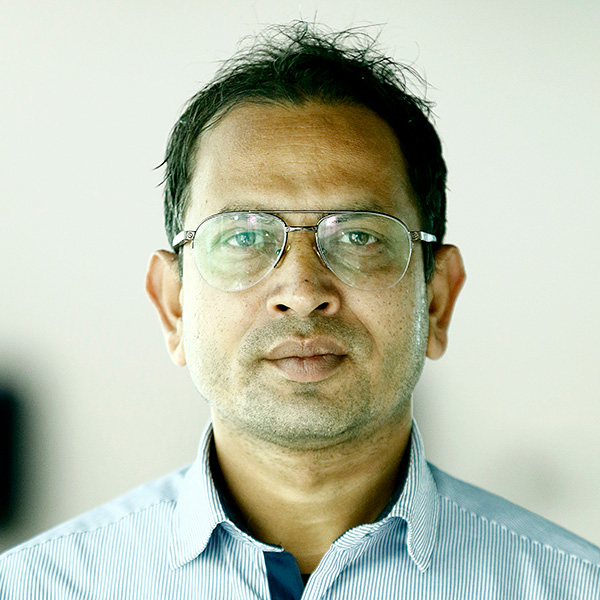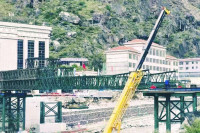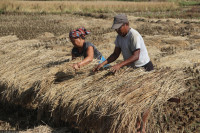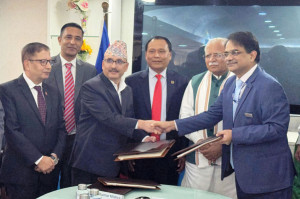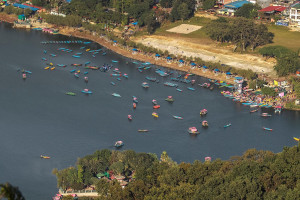Money
Money grows on trees for Nijgadh airport project
The money from the sale of trees that will be cut down at the proposed construction site of an international airport in Nijgadh will pay for half of the construction cost, officials said.
Sangam Prasain
The money from the sale of trees that will be cut down at the proposed construction site of an international airport in Nijgadh will pay for half of the construction cost, officials said.
A swathe of jungle will be flattened to build the airport, which is expected to be the biggest in South Asia in terms of area, yielding more than 600,000 trees.
The market value of the lumber stands at over Rs60 billion, according to sources privy to the matter. The Civil Aviation Authority of Nepal (Caan) said the new airport was estimated to cost Rs121 billion.
If the study conducted by Landmark Worldwide Company (LMW) of Korea in 2012 is taken into account the income generated through sales of the trees could cover almost the entire cost of building the first phase of the airport.
The proposed airport in Nijgadh, located 175 kilometres south of Kathmandu, will be spread over 80 square kilometres.
Caan has hired a consultant to carry out an environmental impact assessment (EIA) of the area where the airport is being built. Nearly 90 percent of the project area is covered by Shorea robusta trees, also known as Sal or Sakhua.
On February 10, the Forest Ministry allowed the Tourism Ministry to conduct an EIA on the condition that the project’s executing agency plants 25 tree saplings for every tree that is cut down.
At least 10 million saplings will need to be planted to replace the 600,000 that will be cut down. “It would be difficult to follow the instruction of the Forest Ministry as we would have to plant more than 15 million saplings,” Tourism Ministry officials said.
The Forest Ministry has also asked the Tourism Ministry to prepare an economic valuation of the impact of the airport construction project on biodiversity. It has also sought an action plan on the types of saplings that will be planted, the location where they will be planted, the amount of time that will be required and the body that will be responsible for planting them.
Meanwhile, the Tourism Ministry is set to table a proposal at the Cabinet this week to assign the Nepal Army to do the preparatory work at the airport project site.
As per the proposal, the Nepal Army will build an access road to the runway and perimeter road.
In April 2012, the Korean company had submitted a detailed feasibility study of the airport project to the government and estimated a price tag of Rs65 billion for the first phase (2010-15), Rs7.78 billion for the second phase (2021-25) and Rs8.79 billion for the third phase (2026-30). The Korean company had projected that the total investment would come to Rs358 billion by the third phase.
Separately, in February last year, Caan produced another preliminary report estimating that the proposed airport can be constructed at a cost of Rs121 billion, excluding the cost of the proposed airport city.
A preliminary internal financial assessment by Caan has proposed building a 4,000-metre runway while LMW’s plan has proposed a 3,600-metre runway. Likewise, Caan has proposed building a 100,000- square-metre international passenger terminal against the Korean company’s proposal for a 75,000-square-metre building.
According to the Korean company’s feasibility study, the airport will be able to handle 15 million passengers annually and accommodate the Airbus A380 super jumbo after the first phase of construction.
Meanwhile, Caan said the airport would be able to handle 20 million passengers annually in the first phase. The new assessment has proposed building 25 aprons.
The government has allocated Rs2.5 billion for the project for this fiscal year.




 19.12°C Kathmandu
19.12°C Kathmandu